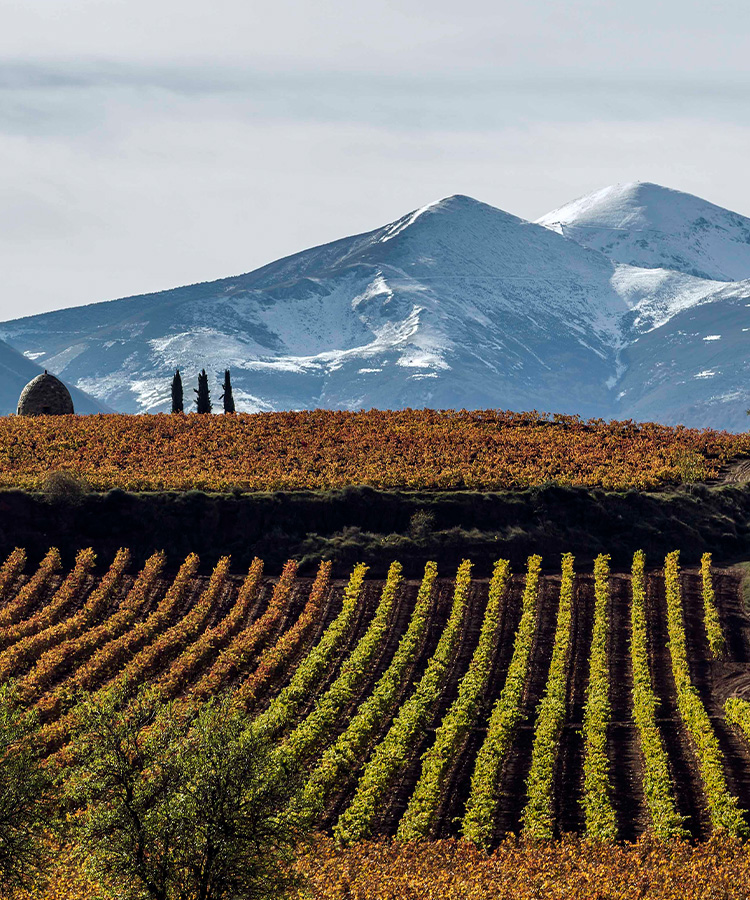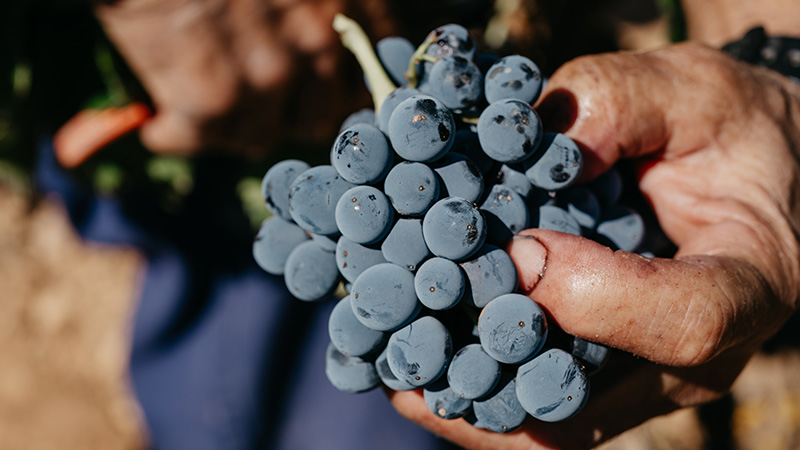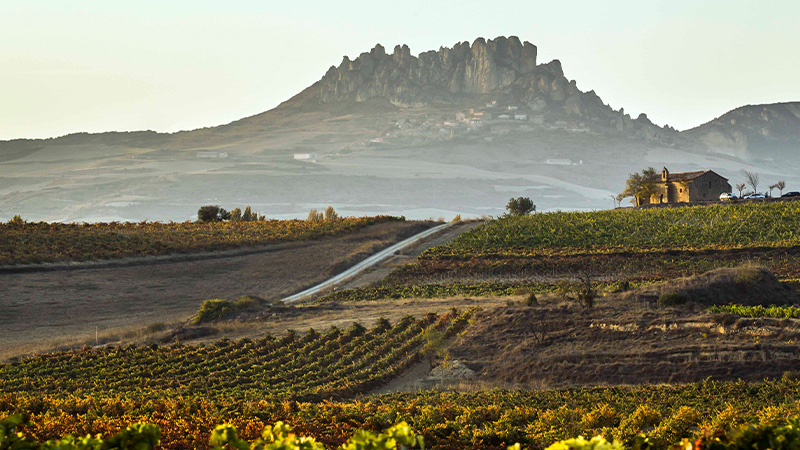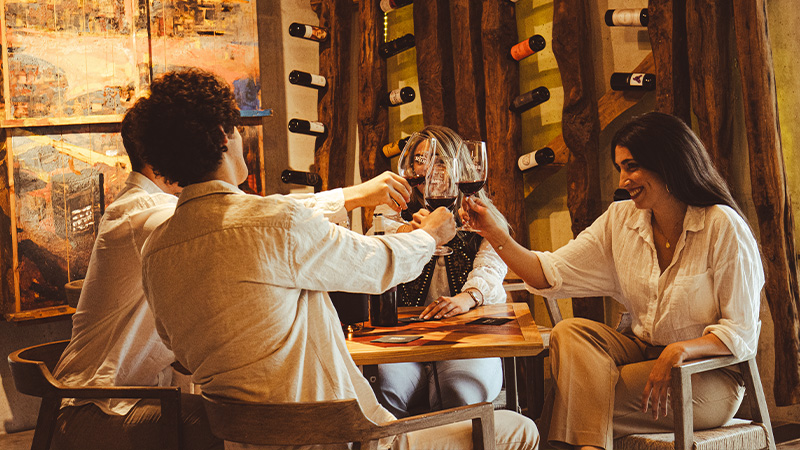
Though wine has been made in the region for centuries, this year marks a century since Rioja was officially established as a DO — or Designation of Origin.
Split into three principle growing subregions — Rioja Alta, Rioja Alavesa, and Rioja Oriental — the landscape is dotted with wineries that use time-honored techniques alongside ones that go for serious tech. It’s a region that’s known for its red wines starring the region’s noble grape, Tempranillo, in styles that are approachable in their youth as well as ones renowned for their extensive cellar-worthiness. But Rioja fans are also captivated by aromatic white wines produced with oxidative aging techniques, as well as numerous other styles of reds, whites, rosés, and sparkling wines that all represent the diversity of local terroir.
The past 100 years includes many milestones, such as a 1974 warranty inclusion and aging certification; a 1980 vintage and aging certification; and the addition of a 1985-era batch-control system. In 1991, Rioja was officially established as a QDO, or Qualified Designation of Origin. What began as humble vine plots thousands of years ago has evolved into an internationally recognized and respected designation. Its three subregions span 100 kilometers — and 66,000 hectares of vineyards — and each offers unique topography for wines from some of the world’s top winemakers who showcase distinctive attributes and styles. It’s also one of the leading regions in the world for sustainable and organic farming and production, mixing legacy and tradition with contemporary innovation.
The Wines
Although the dark purple-skinned Tempranillo is the dominant grape variety in most of the red wines throughout Rioja, other grapes contribute to the blend. These varieties include Graciano, Garnacha Tinta, Maturana Tinta, and Mazuelo as well as international grapes like Merlot and Syrah. Wine styles vary greatly from subregion to subregion (and from producer to producer), and feature classic characteristics like plum, dark cherry, and raspberry, but also classic Rioja notes of tobacco, leather, oak, and cola spice. These pair exceptionally well with everything from charcuterie, game (such as venison, duck, or pheasant) to roasts (even Sunday chicken dinner), and mushroom risotto. They can also be wildly good with gooey melted cheese dishes, pizza, or a vegetarian lasagna.
The grapes used in the production of white Rioja include Viura, Malvasia, Garnacha Blanca, Maturana Blanca, Tempranillo Blanco, Verdejo, Torrontés, Chardonnay, and Sauvignon Blanc. A typical Rioja blanco is food-friendly, zippy, and dry with flavors of yellow peaches, citrus peel, and subtle florals and matches with seafood and vegetarian fare as well as tart cheeses (such as the classic Manchego served with quince jam). Wineries that go for the labor-intensive oxidized style produce whites with tinges of earthy, umami notes of porcini mushroom and black tea. These can be delicious accompaniments to savory, brothy Asian style soups (like ramen) and goat cheese.
Rosés are produced from a variety of grapes, including star grape Tempranillo, as well as Garnacha Tinta, Graciano, Maturana Tinta, Mazuelo, and others, and can range in color from dusty pink to deep fuschia. These pair beautifully with bacon-wrapped dates, hard cheeses, olives, and marcona almonds but also barbecue and spicy snacks like tacos as well as Thai spring rolls with chili dipping sauce.
Finally, sparkling wines, many produced in the traditional sparkling method, are made using multiple white and red grape varieties including Tempranillo, Graciano, Maturana Tinta, Malvasia, Tempranillo Blanco, Torrontés, Sauvignon Blanc, Garnacha Tinta, Mazuelo, Viura, Garnacha Blanca, Maturana Blanca, Chardonnay, and Verdejo. Styles range from fresh and toasty, to richer lees-aged styles, and bubbly rosé. These are often elegant, festive bargains that could easily sub for the typically more expensive sparklers that hail from other parts of the world.
The Subregions
Rioja Alavesa is the northernmost subregion, touching Basque country to the north and Rioja Alta and the Ebro River to the southwest. Winemaking here is quite diverse, with ultra-modern wineries juxtaposed with timeless classics. This is mostly a red-wine-making landscape — with everything from light, chillable reds to those that are richer, oak-driven, and complex — although the refreshing whites of Viura (Macabeo) do pop up as do other styles of pink and bubbly.
To the west, the cooler, high-altitude Rioja Alta yields grapes with long hang time, high acidity, and lower alcohol, with clay, limestone, and other soils that offer excellent nutrient and water retention and good drainage. Its dry, sunny climate combined with the cooling effect from the Sierra Cantabria Mountain Range create conditions for stellar, balanced, and sought-after bottles. Though many are easily approachable in their youth, the balanced acidity in the wines from this region offers the potential to age in the bottle for decades, and remain vivacious long after cellaring.
Once known as Rioja Baja (the name was changed in 2018), the lower-altitude Rioja Oriental is set in the east, with clay-ferrous and alluvial soils that tend to produce lighter-bodied wines to go with the outstanding local gastronomy. Mediterranean (dry and warm) weather conditions contribute to wines with firm structure and slightly more alcohol content than those from Rioja Alta. This broad subregion includes areas with higher-altitude mountain ranges, and wines that run the gamut from bright and acid-forward to rich and velvety with plush tannins. This is a region where Tempranillo still shines, but, as in Côtes du Rhône, here Garnacha (Grenache) has enjoyed a recent revival for its versatility, balanced berry fruit, and cellar-worthy potential.
Labels to Look Out For
Rioja Alavesa
Bodegas Marqués de Riscal in Rioja Alavesa has existed since the 1850s, but it’s now one of the most thoroughly modern wineries in all of Rioja, with its funky, avant-garde Frank Gehry-designed architecture dazzling against the storied valley. They produce a wide range of styles and colors that all exhibit exquisite technique, from approachably affordable releases to traditional styles of vintage Gran Reservas.
Rioja Alta
López de Heredia Viña Tondonia is a family-owned producer based in Rioja Alta that’s been around since the 1870s. The house style is a combination of meticulous oak management (including oxidized whites and rosés) with bottles held in their cellars for years prior to release to ensure quality and depth of flavor.
Rioja Oriental
Palacios Remondo in Rioja Oriental has been established since 1945. Under the direction of visionary winemaker Alvaro Palacios since the early 2000s, this is a winery that was one of the first to champion the Garnacha grape in the region, showing its potential through nurtured, low-yield grape-growing. Many of the wines are bottled without filtration.
Ontanõn has been run by the Perez Cuevas family for four generations. While these wines carry traditional prestige, their second label, Queirón, situated in Rioja Oriental, is a modern feat that has revitalized historical vineyards in Quel with superior technological advancement while tipping a hat to tradition. One of their coolest wines is a Tempranillo Blanc!
Navarrsotillo has led the charge for sustainable, biodynamic winemaking in Rioja since the 1990s. Though they are produced with minimal intervention, these wines are expressive of the terroir with a refined presentation.
Funky to genteel, deep red to pale bubbly, 100 years of La Rioja is a celebration of respect for the land articulated through the joy of wine. This is a great time to revisit a favorite label or try something completely new. A glass of Rioja is a sip through history.
This article is sponsored by Rioja.



